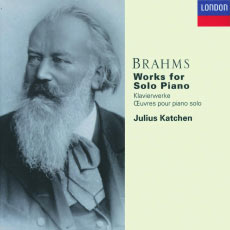Born in 1926 in New Jersey, Julius Katchen made his debut at the age of 10 with Mozart's Concerto in D minor. Upon hearing about this child prodigy, Eugene Ormandy invited Katchen to perform with the Philadelphia Orchestra. The young boy had first begun studying music with his maternal grandparents, Russian immigrants who had taught at conservatories in Moscow and Warsaw. Feeling as though he was lacking in intellectual rigour, he temporarily left the music scene to pursue a three-year degree at Haverford College. He received exceptionally high grades, particularly in philosophy, which earned him a scholarship from the French government. He was then chosen to represent the United States in Paris at the first UNESCO International Festival, where he played Beethoven's Emperor Concerto with the Orchestre National de la Radiodiffusion Française. He loved Paris so much that he decided to move there permanently, amazed by the solidarity between pianists compared to the fierce competition in the United States. In 1956, he moved to Le Vésinet, a western suburb of Paris, with his young French wife where they created an extraordinary collection of nearly 200 netsukes - miniature Japanese sculptures that are traditionally attached to kimonos. Their collection was sold over several Sotheby's auctions in London between 2005 and 2017, attracting avid netsuke collectors from all over the world.
Create a free account to keep reading








